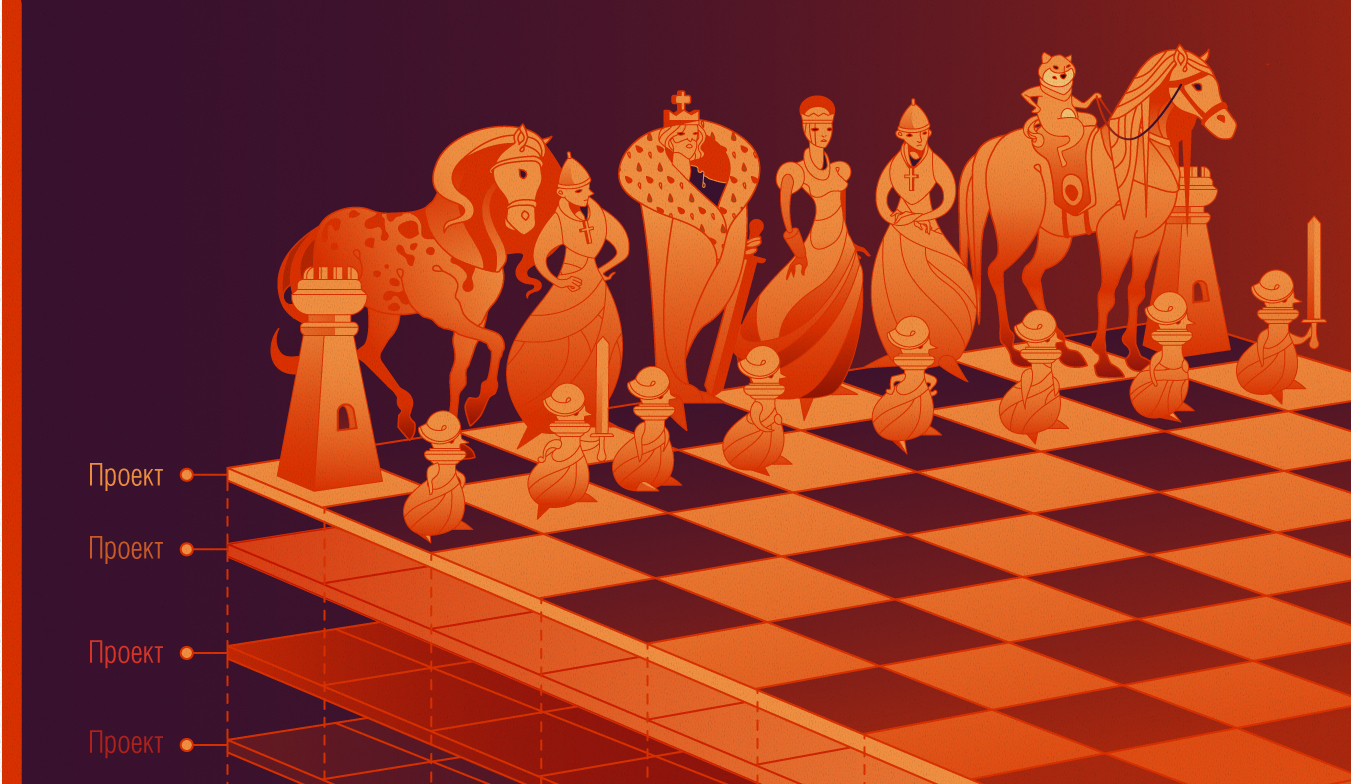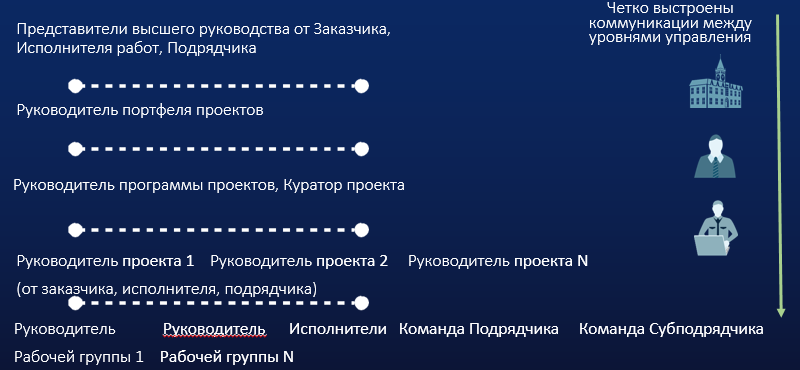Decomposition in managing large-scale projects in the IT industry

To achieve maximum management efficiency in a large number of simultaneously implemented projects in our company, we apply the principle of decomposition and the creation of a hierarchical structure:
Projects portfolio -> Projects Program -> Project.
Such a decomposition allows you to balance management resources and activities according to certain characteristics and to define simple and clear organizational structures of management, powers and levels of responsibility.
As components of the hierarchical structure are used:
')
• Project - a temporary activity aimed at creating unique products, services or obtaining results with proper quality, within the constraints of time and budget;
• Program - a set of interrelated projects, united by a common goal, allocated resources, time for its implementation, technology and implementation conditions, formed to achieve a greater degree of manageability;
• Portfolio - a set of projects and programs that are combined together with the goal of effective management to achieve strategic goals.
In order to determine the most optimal and effective organizational structure for project management, the project is classified into categories. Project classification allows:
• optimize the costs required to manage the project of the relevant category;
• optimize the costs required to manage the project of the relevant category;
• establish an appropriate organizational structure for project management;
• establish a list of project management processes and procedures, the implementation of which, in strict accordance with the regulations, is mandatory for the project in this category;
• establish a uniform form, composition and content of project management documents while reducing the labor costs for their development;
• establish a system of project management quality indicators in accordance with its category.
All our projects can be divided into 4 categories:
• Mega-project - a large-scale project involving a large number of participants (external organizations, for example, government agencies, customer, performer, other interested organizations whose interests may affect the results of the project). As a rule, such a project is a priority and innovative. This category of projects requires continuous integrated management. Such a project has high requirements in terms of management: a complex organizational management structure (maximum number of management levels, maximum number of roles, participants involved in the project), a large number of processes (all possible functional areas of project management knowledge are covered) and management documents, continuous monitoring and time, resource and cost management.
• Multi-project is a large-scale, complex project that does not carry high identified risks. This category of projects requires constant management of time, resources and cost.
• Mono-project - a project aimed at achieving a certain result, as a rule, with the involvement of human resources of one division of the company. Such a project has simplified requirements in terms of management: planning and accounting of resources for their implementation, management by control points, control of completion on time and within budget.
• Project objective - a project aimed at achieving a well-defined result with minimal involvement of labor resources. There are no requirements for such a project in terms of planning and management, but it is necessary to take into account resources for execution and control of completion on time.
Of course, other organizations and enterprises in the course of the formalization of project activities develop their own criteria for assigning a project to one category or another (quantitative and qualitative).
The organizational structure of the project team is a hierarchically organized image of the organization of project activities, arranged in such a way as to relate the programs, projects, work packages to the managing and performing organizational units. In projects we use several types of organizational structures of project teams. These structures differ in the number of levels of the management hierarchy, the obligatory roles of project participants and the organization of the management of Executors.
The project activity uses the following levels of management:
• strategic management level: strategy management level;
• operational management level: project portfolio management level (project portfolio managers);
• operational management level: program and project management (Project Management Council, Project Tutor, Program Manager, Project Manager);
• execution control level: work package management (Work team leaders, Architects, Implementers).
A diagram of the organizational hierarchy by levels of management in a mega-project is shown in Figure 1.

Fig.1 Example of the organizational hierarchy scheme in a mega-project
With such an organizational structure, participants of one level of management in a project directly communicate with participants of only the next level of the hierarchy. The directions of communication, which can be described as “bottom-up” and “top-down” between the levels, show how information will be exchanged, when and where communications will take place (critical connections between people and information), and who responsible for providing each type of communication.
The escalation procedure is built through the prism of management levels in such a way that each participant at his or her management level makes a decision within his competence and authority determined in a particular project. The escalation procedure is used to make decisions on problems and / or conflicts (including risk prevention measures, risk response measures, and implementation of change requests) in case a solution or compromise was not found at a lower project management level.
In large and complex projects, communication often occurs between the participants, bypassing intermediate levels of management, and this can both negatively and positively affect the implementation of the project.
An example of relationships outside the control levels in the project is shown in Figure 2.

Fig.2 An example of relationships outside the control levels in a project
The reasons for the emergence of communications outside the control levels are the following:
1. Previous collaboration experience of project participants who are now at different levels of government.
2. Insufficient knowledge of the manager at a certain level in the project domain, which forces the participant from a higher level to apply to the lower level of the hierarchy, or vice versa, when the Contractor refers to the level of the customer’s representative.
3. Internal corporate culture of project management in a particular organization that is involved in the project.
However, it is not always the attempts of the Project Manager to stop such communications and build them according to the generally accepted “classical scheme” lead to success. When communications occur outside the control levels, it is extremely important for the project manager to find out how much these communications influence decision making at each of the control levels, and whether communication data initiates changes in the main parameters of the project. If decisions are still taken by the persons within whose authority this function is defined, the communications should be formalized to the contrary, by adding the project’s Communication Management Plan (the Project Manager prepares the Communication Management Plan, describing the sources of information in the project and how to obtain it; distribution of information, which defines the consumers of information and methods of its delivery; a detailed description of the resulting documents in the project, which should be learned or transmitted, including their format and content).
Building additional relationships outside the control levels leads to positive results. Only by developing rules within a particular project, taking into account the specifics of the project and the experience of the participants, is it possible to build relationships in the most optimal way.
Source: https://habr.com/ru/post/292498/
All Articles